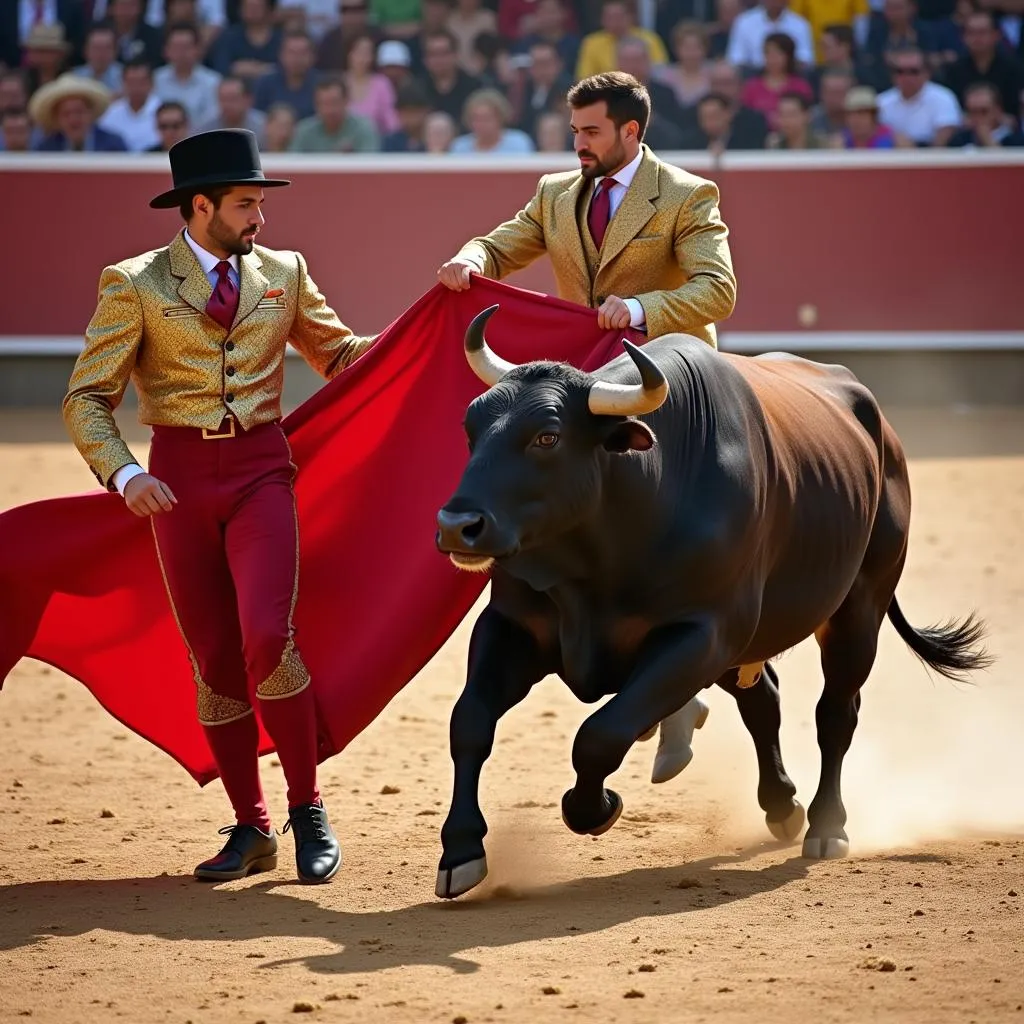The age-old spectacle of bullfighting often evokes questions about the bull’s perception, particularly its ability to see color. Is a bull enraged by the matador’s vibrant red cape, or is there more to the story? Let’s delve into the science behind bovine vision and uncover the truth about bullfighting and color perception.
Debunking the Red Rag Myth: Understanding Bull Vision
Contrary to popular belief, bulls are dichromats, meaning they have two types of color receptors in their eyes, unlike humans who possess three. While humans perceive a wide spectrum of colors, bulls see a limited range, predominantly shades of yellow, green, blue, and some variations of gray. Red, the color often associated with aggression and danger, appears dull and grayish to a bull.
 Bull Eye Structure
Bull Eye Structure
So, if bulls can’t perceive red, why the red cape? The truth lies in the matador’s movements, not the color of the muleta (cape). The swirling fabric and the matador’s skillful maneuvering are what capture the bull’s attention and provoke a charging response. The red color is primarily for the audience’s benefit, adding to the drama and intensity of the spectacle.
Beyond Color: Factors Influencing Bull Behavior in the Ring
While color plays a minimal role, several other factors contribute to a bull’s behavior in the bullring.
- Movement: Bulls are highly sensitive to movement. The matador’s slightest gesture, the flick of the cape, or even the crowd’s sudden motion can trigger a reaction.
- Sound: The roar of the crowd, the matador’s calls, and the sounds of the bullfight itself contribute to the sensory overload the animal experiences.
- Breed: Certain bull breeds are known for their aggression and fighting spirit, bred specifically for bullfighting.
 Bull Charging Matador
Bull Charging Matador
The Ethics of Bullfighting: A Global Debate
The question of whether bulls are color blind extends beyond a scientific curiosity. It opens a broader conversation about the ethics of bullfighting, a tradition deeply rooted in history and culture but facing increasing scrutiny and bans in various parts of the world.
Opponents argue that bullfighting is cruel and inhumane, subjecting animals to unnecessary stress, pain, and ultimately, death. Proponents view it as an art form, a cultural heritage symbolizing courage, skill, and the ritualistic confrontation between man and beast.
Conclusion: Seeing Bullfighting in a New Light
Understanding that “is a bull color blind” leads to a more nuanced understanding of bullfighting. It’s not a simple case of a red flag triggering aggression, but a complex interplay of sensory stimuli, breeding, and human actions. As we learn more about animal behavior and sentience, it’s essential to critically examine traditions and their impact on the animal world.

